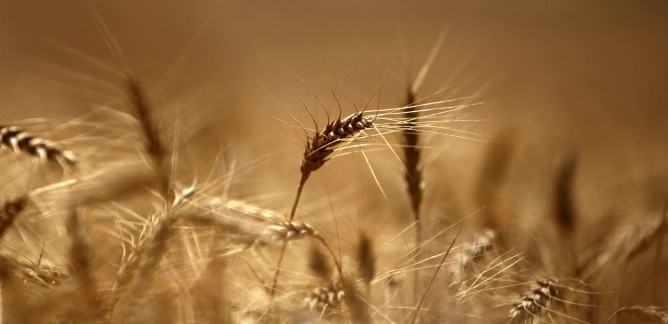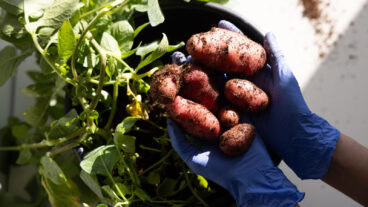Will global warming put an end to your morning bowl of Wheaties? An evolutionary biology researcher in Israel thinks there’s cause for concern.
The 28-year comparative study he conducted and published with colleagues shows that wild emmer wheat and wild barley — the progenitors of the staple crops for humans and animals across the world — have undergone worrying changes caused by global warming.
Prof. Eviatar (Eibi) Nevo, founder of the University of Haifa’s Institute of Evolution and director of its International Graduate Center of Evolution, warns that these changes put at risk the continued improvement and production of cereal grains because of genetic deterioration and increased susceptibility to environmental stresses.
Spread the Word
• Email this article to friends or colleagues
• Share this article on Facebook or Twitter
• Write about and link to this article on your blog
• Local relevancy? Send this article to your local press
“Multiple effects of the global warming phenomenon have been observed in many species of plants and animals,” he says. “But this study is pioneering in showing its influence on flowering and genetic changes in wild cereals. These changes threaten the best genetic resource for crop improvement and thereby may damage food production.”
Nevo is well aware that not all scientists acknowledge global warming, but he tells ISRAEL21c that “no other significant factors could be responsible” for the changes he documented in the article written with Israeli and Canadian co-researchers in the journal Proceedings of the National Academy of Sciences.
“We studied 10 wheat and 10 barley populations and all showed a dramatic change in flowering time that cannot be explained by any other factor,” he stresses. “These cereal progenitors are adapting their time of flowering to escape the increasing heat.”
What happened over 28 years?
The Haifa University scientists had access to data on 98 emmer wheat and wild barley seeds harvested in 1980. In 2008, they collected new seeds from the same populations and grew them in a greenhouse, looking for differences.
“All the 2008 [plants] were about 10 days earlier to flower and ripen, indicating stress,” says Nevo, adding that global warming has been going on in Israel for several dozen years but his team had no material to study from before 1980.
The study also found that the genetic diversity of the 2008 sample is significantly reduced, but some new drought-adapted variants appeared that could be used for crop improvement.
[scrollGallery id=14 useCaptions=true]
Overall, however, the news is not good. “The genetic resources of these critical wild cereals are undergoing rapid erosion and cannot be dismissed as a concern for future generations,” says Nevo. “Wild emmer wheat is the world’s most important genetic resource for wheat improvement, and it is up to us to preserve it.”
At the Institute of Evolution, researchers are introducing traits such as drought- and salt-resistance into the grains. Some of these genetically altered seeds will be banked at the institute and others will be planted in the field to determine how they fare. Nevo feels that a much more extensive effort needs to be made against urbanization and global warming to keep the natural populations thriving.
The ‘Israeli Galapagos’
Emmer wheat and barley seeds were also found in one of Israel’s four “evolution canyons,” a wadi (valley) in the Carmel mountains that is part of an Israeli national park and a future UNESCO biosphere reserve.
Evolution canyons are naturally occurring sites where researchers can observe, analyze and predict evolutionary changes among flora and fauna. The Carmel site is considered a model evolution canyon because each side of the wadi is exposed to different weather conditions and stresses.
“It’s the Israeli Galapagos,” says Nevo, “a natural laboratory with two abutting slopes. One, the south-facing-slope, we call the ‘African’ Slope because it gets more solar radiation and heat; hence it’s drier and warmer than the opposite north-facing ‘European’ Slope, which is forested with live oaks. These two slopes represent much of the divergence and differentiation that occurs across the globe between the two continents of Africa and Europe.”
In this one 7,000-square-meter canyon, Nevo’s team has identified 2,500 species of plants and animals — 100 bacteria, 500 soil fungi, 340 flowering plants, 1,500 insects and 50 vertebrates, including seven mammalian, 17 reptilian and 26 bird species — though there are many more.
Evolution canyons are found in many parts of the world, but the Israelis were the first to study them in depth and realize their potential for learning how different species adapt and evolve, Nevo explains.
“We published all our experiments and results, so everyone can see them. And many students from all over the world — the United States, China, Europe, South America — have come here to study in our evolution canyon since 1990. There is enough work for generations.”
His graduate student Shmuel Raz is now doing research in an evolution canyon in Idaho for his post-doctoral work at Harvard.
“This is the first evolution canyon outside Israel to be studied in depth, and we are in collaboration with Harvard because we are experts at conducting these studies,” says Nevo.














